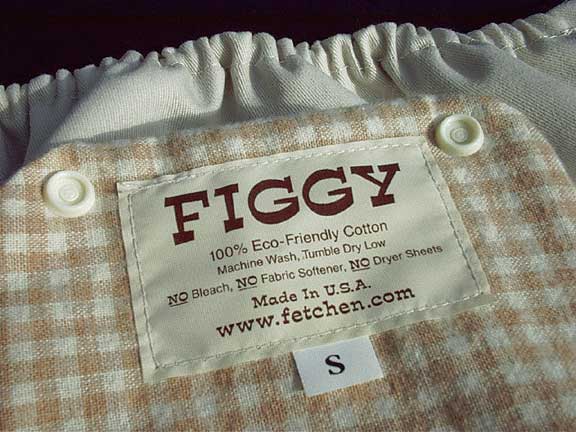|
CHOOSE CLOTH
DIAPERS!
YOUR
CHILD WILL SPEND 24 HOURS A DAY IN DIAPERS FOR 2-3 YEARS—THAT
ADDS UP TO ABOUT 9,000 DIAPER CHANGES! CLOTH DIAPERS PROVIDE
HEALTH AND COMFORT.
DIAPER RASH WAS NOT COMMON IN BABIES UNTIL THE WIDESPREAD
USE OF DISPOSABLES.
CLOTH IS A BREATHABLE FIBER AND ALLOWS MORE AIR TO CIRCULATE
AROUND A BABY’S SENSITIVE SKIN, UNLIKE DISPOSABLE
DIAPERS WHICH ARE COMPOSED OF PLASTIC, PAPER, AND SUPER
ABSORBANT CHEMICALS.
| WHY
USE CLOTH DIAPERS?
1—CLOTH DIAPERS ARE FREE OF HARMFUL CHEMICALS.
2—CLOTH DIAPERS HAVE A LOW ENVIRONMENTAL IMPACT.
3—CLOTH
DIAPERS PROPERLY DISPOSE OF WASTE PRODUCTS.
4—CLOTH
DIAPERS ARE ECONOMICAL.
5—CLOTH DIAPERS FACILITATE POTTY TRAINING.
6—BABIES ARE MORE COMFORTABLE IN CLOTH. |
 |
The super-absorbent chemical found in most disposables diapers
is called sodium polyacrylate, the same chemical that was
removed from tampons because of its link to toxic shock
syndrome. Babies have an adverse reaction to this chemical.
There have been documented cases of sodium polyacrylate
being found in the urinary tract of babies, and it has caused
severe diaper rash and bleeding in the perineal and scrotal
tissues of some babies. Disposables may also be a trigger
for asthma in babies.
Trace amounts of dioxin—the most toxic of all cancer linked
chemicals—used to bleach paper has also been found. In smallest
amounts, dioxin causes genetic damage, liver disease, and
immune system suppression.
Chemical absorbent disposables do not breathe so this raises
a baby’s skin temperature by a significant amount. One study
claims four degrees. This is a potential source of irritation
and when the heat combines with wetness on or near the skin,
and with the bacteria breakdown of urine, the risk of skin
infection increases.
Did you know…500 disposables are made from a full grown
tree!
Although it is illegal to dispose of human waste in trash,
disposables are dumped anyway. In the United States 16-18
billion disposables are dumped into landfills each year.
They carry over 100 viruses to the landfills—including polio
and hepatitis B from vaccine residues. It takes 5 centuries
for them to decompose. With cloth diapers, feces are routed
through a sewage system which is designed to dispose waste
properly.
|


